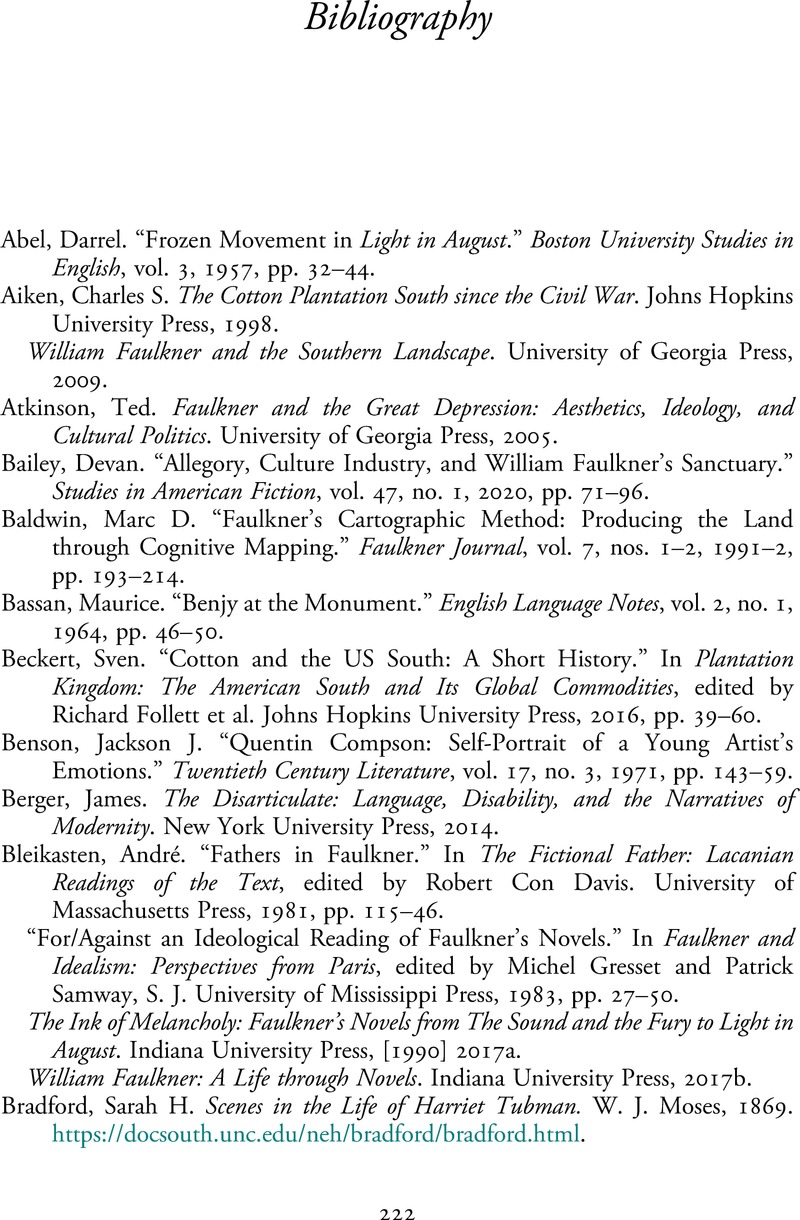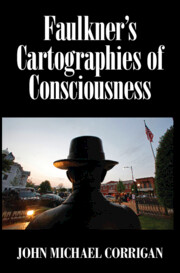Book contents
- Faulkner’s Cartographies of Consciousness
- Faulkner’s Cartographies of Consciousness
- Copyright page
- Dedication
- Contents
- Acknowledgments
- Introduction
- Chapter 1 Murder in the House of Memory
- Chapter 2 A Clock in Place of the Sun
- Chapter 3 Invasions of Interiority
- Chapter 4 When Ideology Wavers
- Chapter 5 Beyond the Tyranny of Textual Space
- Chapter 6 Architecture of Interiority
- Conclusion
- Notes
- Bibliography
- Index
- References
Bibliography
Published online by Cambridge University Press: 02 November 2023
- Faulkner’s Cartographies of Consciousness
- Faulkner’s Cartographies of Consciousness
- Copyright page
- Dedication
- Contents
- Acknowledgments
- Introduction
- Chapter 1 Murder in the House of Memory
- Chapter 2 A Clock in Place of the Sun
- Chapter 3 Invasions of Interiority
- Chapter 4 When Ideology Wavers
- Chapter 5 Beyond the Tyranny of Textual Space
- Chapter 6 Architecture of Interiority
- Conclusion
- Notes
- Bibliography
- Index
- References
Summary

- Type
- Chapter
- Information
- Faulkner's Cartographies of Consciousness , pp. 222 - 230Publisher: Cambridge University PressPrint publication year: 2023



